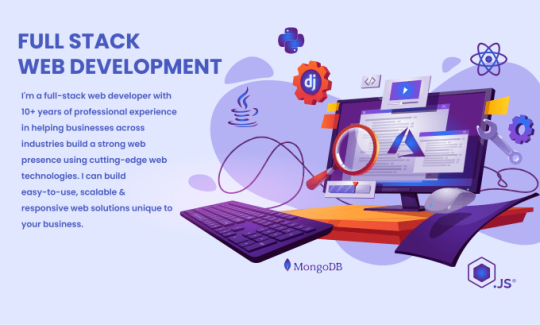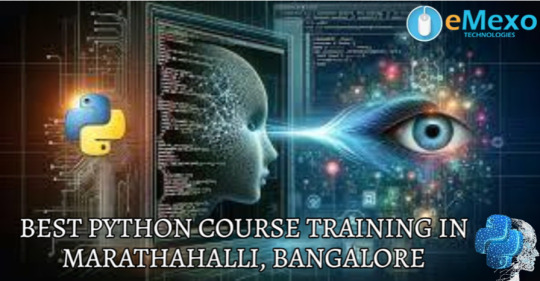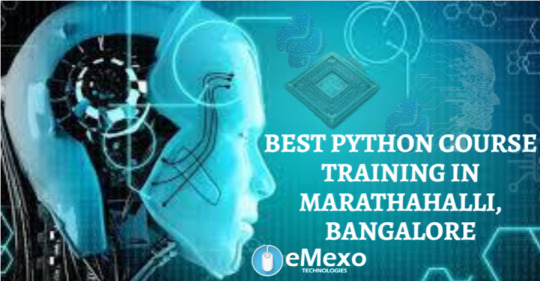#Django Expert
Explore tagged Tumblr posts
Text

I excel in swift web development utilizing the Django framework, React, Redux, Next.js, and Angular. Over the experience of 9 years, I have honed my skills working extensively with Python, Django framework, Django Rest framework, and various other Python-based technologies. My proficiency extends to comprehending SQL databases, REST APIs, and implementing robust security measures.
0 notes
Text
Unlock growth with custom web development solutions | ABK Data Lab!
In the current digital world, establishing a solid online presence is essential that optional. Companies with the aim of differentiating from their competitors must involve customers effectively and encourage long -term growth, which requires more than a simple website. This is where custom web development solutions become crucial.
Personalized web development goes beyond the platform templates and Plug-And-Play platforms. It implies the elaboration of personalized high performance applications that specifically meet their commercial objectives and customer needs. Whether it is a startup that seeks to launch its MVP or an established company with the objective of climbing, personalized solutions provide flexibility, scalability and uniqueness required to succeed.
Why choose personalized web development solutions?
While the templates and builders of prefabricated websites offer convenience, they often fall short of flexibility, performance and singularity of the brand. Personalized solutions, on the other hand, are built from scratch to align with their commercial requirements, processes and long -term objectives.

Personalized web development says:
A unique design that reflects the identity of its brand
Improved website performance and speed
IMPROVED SAFETY AND DATA PROTECTION
Flexibility to add new features over time
Full property of your code base
With a personalized approach, its digital product evolves as your company does, ensuring that your website is always aligned with its strategic objectives.
Key components of our custom web development services
In the center of our service there is a commitment to quality, scalability and innovation. We manage all stages of development, from the idea to the launch, with an expert developer, designers and project managers.
1. Receptive design for all devices
In a world where more than 50% of web traffic comes from mobile devices, the response capacity is not optional, it is essential. Our team ensures that its website is seen and functions without problems in desks, tablets and smartphones. A receptive design not only improves user experience, but also improves SEO classifications and accessibility.
2. Border Development with React.js
We use React.js, one of the most powerful and widely adopted Frontend libraries, to build fast, interactive and easy to use interfaces. REACT allows us to create reusable components and maintain high performance, even as its scale application. With its virtual DOM and its efficient update representation, ReACT guarantees an optimal user experience.
3. Backend development with Django/python
In the Backend, we trust the power and elegance of Django and Python. Django's robust architecture allows rapid development while maintaining high security standards. From user authentication management to database management, Django offers the stability and structure necessary to build complex web applications.
4. Design and optimization of the database
Each powerful web application needs a well structured and optimized database. Our team designs scalable database schemes adapted to your data needs, whether you are working with SQL (Postgresql, MySQL) or NOSQL (Mongodb). We ensure the rapid performance of the consultation and integrity of the data while preparing for future growth.
5. API development and integration
Modern web applications are interconnected systems. We create API Restoful and Graphql that allow an exchange of data without problems between their border and backend systems. We also integrate third -party services, such as payment catwalks, CRMS and social platforms to extend the functionality of its application.
Personalized web development benefits
Here are eight key benefits that make personalized web development an intelligent investment for companies with a future vision:
✓ Managed to your business
Custom web solutions are created around their commercial model, objectives and unique user base, ensuring optimal performance and customer satisfaction.
✓ Scalability
As your business grows, your application can also. Personalized platforms are designed to evolve without complete reviews.
✓ Improved security
Unlike massive market platforms, personalized applications can be strengthened with advanced safety protocols suitable for your industry.
✓ Lowering performance
Personalized applications can be optimized for speed and response capacity, reducing rebound rates and improving user participation.
✓ Complete control over the characteristics
You decide what happens in your application. This flexibility allows you to prioritize the characteristics that matter its users most.
✓ Better SEO integration
From the clean code to the optimized site structures, the personalized development provides a friendly base for the SEO that increases its visibility in the search engines, especially when guided by experienced in SEO specialist in Kerala.
✓ Third parties integration
Do you need to integrate a CRM, ERP or specific payment payment system? Personalized development guarantees perfect connectivity.
✓ Competitive advantage
A unique digital product distinguishes its crowd brand, increasing trust and loyalty among customers.
Who can benefit from personalized web development?
Personalized web development is not limited to new technological companies or Fortune 500 companies. It benefits a wide range of industries and organizations, including:
Electronic commerce companies that seek to provide a personalized purchase experience
Medical care suppliers needing patient insurance portals
Educational institutions that deliver interactive learning platforms
Financial services that require protection and compliance with solid data
Non -profit and NGO organizations with the aim of involving users and donors efficiently
Whether you are looking to automate internal operations or provide a next level user experience, a custom web solution is your best option.
Our development process: from the concept to launch
We believe in a collaborative and transparent process that keeps it in the loop in every step of the road. This is how we give life to your vision:
Discovery and Planning: We begin by understanding their commercial objectives, user needs and technical requirements.
UI/UX design: Our designers create intuitive and attractive interfaces that are aligned with their brand.
Development: Using agile methodologies, we create its application in iterations, ensuring quality and adaptability.
Tests and QA: We rigorously prove your web application for performance, safety and usability on all devices.Implementation and support: Once everything is perfect, we launch its application and provide continuous support to guarantee continuous success.

Conclusion
ABK Data Lab: Custom web development solutions provide versatility, performance, and long-term value that cannot match pre-made platforms. By investing in an analog digital experience, you strengthen your business to innovate, scale, and give better services to your customers. With our expert team and a proven development process, we convert your vision into a powerful, responsible, and safe web application that supports every step of your development.
Therefore, whether you are building a customer portal, an e-commerce platform, or a data-operated dashboard, choose custom web development solutions that are unique and ambitious as your business.
#custom web development solutions#custom web development#custom web development solutions kerala#custom web development kerala#custom web development in kerala#web development#web development in kerala#web development india#web development world wide#html#css#seo#seo in kerala#seo in india#seo kerala#SEO specialist in Kerala#SEO specialist#seo expert kerala#SEO#search engine optimisation#SEO Specialist#WordPress Developer#expert developer#Django#Python#ABK Data Lab#e-commerce#e commerce solution#CRMS#cms
0 notes
Text

When hiring Django coders, look for proficiency in Python, deep knowledge of Django, experience with RESTful APIs, strong database management skills, and expertise in version control tools.
#Hire Django Developers#Hire Remote Django developers#Hire Django Programmers#Hire Django Experts#Django Development Services#Hire the best Django developers#Hire Django coders#Hire Django consultant#Django Website Development#Django Mobile App Development#Best Django development company#Hire Dedicated Django Developers
0 notes
Text
#fulllancer#hire python developer#hire graphic designer#hire seo experts#hire seo experts india#hire django developer#hire django developer in india#hire python django developer#django developer skills
1 note
·
View note
Note
What would your main influences for your own vision of a Scarlet Witch movie?
This. I obviously don't want Marvel Studios to make a Scarlet Witch movie with Olsen, and if the M C U is going to continue as it is now, then I hope that version of Wanda stays dead and we never see her again.
But if you're looking for an original or stand-alone Scarlet Witch plot, particularly if you want an updated version of her and Pietro's origins, I've been kicking around that story pitch for a few years and that's my go-to answer. For brevity's sake, I'll copy it below.
If by "influences" you mean cinematic or creative influences-- I'm not a film expert. I always want magic-centric superhero movies to have a distinct aesthetic, but I'm rarely satisfied by what they actually put out. I would probably look towards folk horror for a lot of the stuff set in and around Wundagore, but I'm a little nervous about marrying that genre with Romani subjects and perspectives. And I know this film is a bit dated in the way it talks about magic and spritituality, but I still love The Craft and I think it's the gold standard when it comes to making witchfact feel immersive and tangible-- and it does it without all the overwrought energy-beam effects we see in so many M C U titles.
Wanda and Pietro's childhood and adolescence would basically follow 616-canon-- raised by Django and Marya; separated from their family during a racist hate crime; and forced to live on the run for years due to their emerging powers and further discrimination.
They return to Mount Wundagore seeking answers about their powers and their birth mother. They are taken in by the Knights of Wundagore, who, as in Midnight Suns, are an ancient order tasked with safeguarding the mountain and its hidden magic. Little do they know, the Knights have been corrupted by the same villain-- be that Modred or the Evolutionary-- who killed their birth mother and experimented on them as babies.
Wanda is given pages from the Darkhold, which she believes are ancient magical texts that will help her master her abilities. In truth, of course, they are priming her to become Chthon's vessel. She performs spells from the Darkhold to bolster the Knight's powers. Pietro has joined the Knights, believing that they will help him protect his sister-- as in canon, Pietro protective to a fault, because he believes that people are always trying to take advantage of Wanda and her abilities. And he's not wrong!
Agatha Harkness infiltrates the Knights of Wundagore, disguised as an elderly healer. She is an ancient witch whose coven once worked alongside the true Knights to keep Chthon bound while studying the mountain's magic. She has known the Maximoff family for generations, and has been seeking out Natalya's children ever since receiving a premonition of the return of the Scarlet Witch.
Agatha doesn't have the power the stop Wanda now that she is under the Darkhold's influence, so she sends a warning to Doctor Strange that Chthon's return is eminent.
Strange gathers a team of heroes to prevent Chthon's return. This leads to a big fight wherein Wanda and Pietro are technically the "bad guys," which ends with Wanda fully succumbing to the Darkhold. She unleashes a devastating attack against the heroes and descends deep within the mountain.
Pietro find himself abandoned on the mountainside. Agatha reveals herself to him and explains the truth, not only about his family but also about the Modred/Evolutionary situation. Pietro joins the heroes, and Agatha urges him to seek out Django, who she has discovered living in a nearby Transian village.
Django's memories are distorted by trauma and a magical curse that was inflicted on him by the Knights to keep him away from Wanda. Upon reuniting Django with his son, Agatha is able to lift the curse, explaining that their family's legacy-- not their blood, but their love for each other and the gifts they have passed down through their generations-- is the true source of their magic.
Chthon emerges from the mountain, using Wanda as a vessel. There's another big fight, and the heroes are able to get Pietro and Django close enough to Wanda for them to exorcize and bind Chthon within a doll that Django had crafted as a gift for his pregnant sister, Natalya. Django tragically passes away after the battle, but the twins are able to properly mourn him and their mothers. Wanda witnesses the spirit of Natalya and awakens to her true power as the Scarlet Witch.
Wanda agrees to study under Agatha, Pietro joins the hero team, and they both both meet Victoria Montessi, who is going to help them track down the Darkhold pages that have now been scattered to the wind. VICKI + WANDA BESTFRIENDS REAL
13 notes
·
View notes
Text
Lil' Red & The Rooster Bring Sassy Swing and Bluesy Charm in New Single "Goodbye Frowns"

Lil' Red & The Rooster’s latest single “Goodbye Frowns” is a vibrant, jazz-blues anthem. With its playful energy and groove, this song is a spirited reminder to embrace joy even during life’s tougher moments.
Jen "Lil’ Red" Milligan’s sassy, scatting vocals capture the song’s message, while Pascal Fouquet, known as the “Rooster,” brings his distinctive guitar work - an expert blend of blues traditions and modern flair.
Together they have created a distinctive sound that draws on their “retro modern blues” style.
Listen in here:
“Ne me suis pas dans mon film.” This is a French phrase which translates as “Don’t follow me into my film,” and it is the guiding sentiment behind the song.
Lil’ Red’s light drumming syncs with Pascal’s intricate guitar work on a vintage Stella acoustic, and we can hear the distinct influence of B.B. King and Django Reinhardt emerge into something of their own.
Chicago bassist Felton Crews completes the trio, laying down smooth six-string bass lines and a rhythmic foundation that complements the lively interplay between vocals and guitar.
This upbeat feel-good song offers a lively preview of Lil’ Red & The Rooster’s upcoming 2025 album which promises to explore further their unique sound of blues and jazz.
And at a time when love songs often only focus on heartbreak, “Goodbye Frowns” takes on a different approach - a bright, swinging reminder that true happiness is something cultivated within and shared best when both partners bring their own joy to the relationship.
“Goodbye Frowns” was recorded at JoyRide Studio and mixed by Brian Leach and offers us a glimpse into the duo’s forthcoming 2025 album.

About Lil’ Red & The Rooster
Jen “Lil' Red” Milligan and Pascal Fouquet, the dynamic duo behind Lil’ Red & The Rooster, have been creating music together since 2010. Both drawn to the blues early in their lives, their shared passion brought them together and formed a bond as deep as their love for the genre.
Their sound is the product of years of fine-tuning and evolving. Jen’s background spans musical theater and rhythm and blues, with her lively stage presence honed by performances in iconic shows like Hair and Jesus Christ Superstar. Pascal, who is a native of Normandy France, has been shaped by his years performing with blues legends like Diunna Greenleaf and Mike Sanchez, adding a layer of international flair to his already impressive guitar work.
Their debut album Soul Burnin’ (2018) was produced by Chicago blues icon Dave Specter, and marked a major milestone for the duo. Recorded at JoyRide Studio by Blaise Barton, the album captured their diverse influences and cross-continental sound. Then in 2019, Lil’ Red & The Rooster reached the finals of the International Blues Challenge in Memphis.
When not headlining festivals or playing intimate shows at places like Buddy Guy’s Legends in Chicago, Lil' Red & The Rooster continue to refine their sound, bringing the healing power of the blues to audiences worldwide.
Stay up to date with Lil’ Red & The Rooster on their Website
Stream music on Spotify, Apple Music and YouTube music.
4 notes
·
View notes
Text
What is Python, How to Learn Python?
What is Python?
Python is a high-level, interpreted programming language known for its simplicity and readability. It is widely used in various fields like: ✅ Web Development (Django, Flask) ✅ Data Science & Machine Learning (Pandas, NumPy, TensorFlow) ✅ Automation & Scripting (Web scraping, File automation) ✅ Game Development (Pygame) ✅ Cybersecurity & Ethical Hacking ✅ Embedded Systems & IoT (MicroPython)
Python is beginner-friendly because of its easy-to-read syntax, large community, and vast library support.
How Long Does It Take to Learn Python?
The time required to learn Python depends on your goals and background. Here’s a general breakdown:
1. Basics of Python (1-2 months)
If you spend 1-2 hours daily, you can master:
Variables, Data Types, Operators
Loops & Conditionals
Functions & Modules
Lists, Tuples, Dictionaries
File Handling
Basic Object-Oriented Programming (OOP)
2. Intermediate Level (2-4 months)
Once comfortable with basics, focus on:
Advanced OOP concepts
Exception Handling
Working with APIs & Web Scraping
Database handling (SQL, SQLite)
Python Libraries (Requests, Pandas, NumPy)
Small real-world projects
3. Advanced Python & Specialization (6+ months)
If you want to go pro, specialize in:
Data Science & Machine Learning (Matplotlib, Scikit-Learn, TensorFlow)
Web Development (Django, Flask)
Automation & Scripting
Cybersecurity & Ethical Hacking
Learning Plan Based on Your Goal
📌 Casual Learning – 3-6 months (for automation, scripting, or general knowledge) 📌 Professional Development – 6-12 months (for jobs in software, data science, etc.) 📌 Deep Mastery – 1-2 years (for AI, ML, complex projects, research)
Scope @ NareshIT:
At NareshIT’s Python application Development program you will be able to get the extensive hands-on training in front-end, middleware, and back-end technology.
It skilled you along with phase-end and capstone projects based on real business scenarios.
Here you learn the concepts from leading industry experts with content structured to ensure industrial relevance.
An end-to-end application with exciting features
Earn an industry-recognized course completion certificate.
For more details:
#classroom#python#education#learning#teaching#institute#marketing#study motivation#studying#onlinetraining
2 notes
·
View notes
Text
How Python Powers Scalable and Cost-Effective Cloud Solutions

Explore the role of Python in developing scalable and cost-effective cloud solutions. This guide covers Python's advantages in cloud computing, addresses potential challenges, and highlights real-world applications, providing insights into leveraging Python for efficient cloud development.
Introduction
In today's rapidly evolving digital landscape, businesses are increasingly leveraging cloud computing to enhance scalability, optimize costs, and drive innovation. Among the myriad of programming languages available, Python has emerged as a preferred choice for developing robust cloud solutions. Its simplicity, versatility, and extensive library support make it an ideal candidate for cloud-based applications.
In this comprehensive guide, we will delve into how Python empowers scalable and cost-effective cloud solutions, explore its advantages, address potential challenges, and highlight real-world applications.
Why Python is the Preferred Choice for Cloud Computing?
Python's popularity in cloud computing is driven by several factors, making it the preferred language for developing and managing cloud solutions. Here are some key reasons why Python stands out:
Simplicity and Readability: Python's clean and straightforward syntax allows developers to write and maintain code efficiently, reducing development time and costs.
Extensive Library Support: Python offers a rich set of libraries and frameworks like Django, Flask, and FastAPI for building cloud applications.
Seamless Integration with Cloud Services: Python is well-supported across major cloud platforms like AWS, Azure, and Google Cloud.
Automation and DevOps Friendly: Python supports infrastructure automation with tools like Ansible, Terraform, and Boto3.
Strong Community and Enterprise Adoption: Python has a massive global community that continuously improves and innovates cloud-related solutions.
How Python Enables Scalable Cloud Solutions?
Scalability is a critical factor in cloud computing, and Python provides multiple ways to achieve it:
1. Automation of Cloud Infrastructure
Python's compatibility with cloud service provider SDKs, such as AWS Boto3, Azure SDK for Python, and Google Cloud Client Library, enables developers to automate the provisioning and management of cloud resources efficiently.
2. Containerization and Orchestration
Python integrates seamlessly with Docker and Kubernetes, enabling businesses to deploy scalable containerized applications efficiently.
3. Cloud-Native Development
Frameworks like Flask, Django, and FastAPI support microservices architecture, allowing businesses to develop lightweight, scalable cloud applications.
4. Serverless Computing
Python's support for serverless platforms, including AWS Lambda, Azure Functions, and Google Cloud Functions, allows developers to build applications that automatically scale in response to demand, optimizing resource utilization and cost.
5. AI and Big Data Scalability
Python’s dominance in AI and data science makes it an ideal choice for cloud-based AI/ML services like AWS SageMaker, Google AI, and Azure Machine Learning.
Looking for expert Python developers to build scalable cloud solutions? Hire Python Developers now!
Advantages of Using Python for Cloud Computing
Cost Efficiency: Python’s compatibility with serverless computing and auto-scaling strategies minimizes cloud costs.
Faster Development: Python’s simplicity accelerates cloud application development, reducing time-to-market.
Cross-Platform Compatibility: Python runs seamlessly across different cloud platforms.
Security and Reliability: Python-based security tools help in encryption, authentication, and cloud monitoring.
Strong Community Support: Python developers worldwide contribute to continuous improvements, making it future-proof.
Challenges and Considerations
While Python offers many benefits, there are some challenges to consider:
Performance Limitations: Python is an interpreted language, which may not be as fast as compiled languages like Java or C++.
Memory Consumption: Python applications might require optimization to handle large-scale cloud workloads efficiently.
Learning Curve for Beginners: Though Python is simple, mastering cloud-specific frameworks requires time and expertise.
Python Libraries and Tools for Cloud Computing
Python’s ecosystem includes powerful libraries and tools tailored for cloud computing, such as:
Boto3: AWS SDK for Python, used for cloud automation.
Google Cloud Client Library: Helps interact with Google Cloud services.
Azure SDK for Python: Enables seamless integration with Microsoft Azure.
Apache Libcloud: Provides a unified interface for multiple cloud providers.
PyCaret: Simplifies machine learning deployment in cloud environments.
Real-World Applications of Python in Cloud Computing
1. Netflix - Scalable Streaming with Python
Netflix extensively uses Python for automation, data analysis, and managing cloud infrastructure, enabling seamless content delivery to millions of users.
2. Spotify - Cloud-Based Music Streaming
Spotify leverages Python for big data processing, recommendation algorithms, and cloud automation, ensuring high availability and scalability.
3. Reddit - Handling Massive Traffic
Reddit uses Python and AWS cloud solutions to manage heavy traffic while optimizing server costs efficiently.
Future of Python in Cloud Computing
The future of Python in cloud computing looks promising with emerging trends such as:
AI-Driven Cloud Automation: Python-powered AI and machine learning will drive intelligent cloud automation.
Edge Computing: Python will play a crucial role in processing data at the edge for IoT and real-time applications.
Hybrid and Multi-Cloud Strategies: Python’s flexibility will enable seamless integration across multiple cloud platforms.
Increased Adoption of Serverless Computing: More enterprises will adopt Python for cost-effective serverless applications.
Conclusion
Python's simplicity, versatility, and robust ecosystem make it a powerful tool for developing scalable and cost-effective cloud solutions. By leveraging Python's capabilities, businesses can enhance their cloud applications' performance, flexibility, and efficiency.
Ready to harness the power of Python for your cloud solutions? Explore our Python Development Services to discover how we can assist you in building scalable and efficient cloud applications.
FAQs
1. Why is Python used in cloud computing?
Python is widely used in cloud computing due to its simplicity, extensive libraries, and seamless integration with cloud platforms like AWS, Google Cloud, and Azure.
2. Is Python good for serverless computing?
Yes! Python works efficiently in serverless environments like AWS Lambda, Azure Functions, and Google Cloud Functions, making it an ideal choice for cost-effective, auto-scaling applications.
3. Which companies use Python for cloud solutions?
Major companies like Netflix, Spotify, Dropbox, and Reddit use Python for cloud automation, AI, and scalable infrastructure management.
4. How does Python help with cloud security?
Python offers robust security libraries like PyCryptodome and OpenSSL, enabling encryption, authentication, and cloud monitoring for secure cloud applications.
5. Can Python handle big data in the cloud?
Yes! Python supports big data processing with tools like Apache Spark, Pandas, and NumPy, making it suitable for data-driven cloud applications.
#Python development company#Python in Cloud Computing#Hire Python Developers#Python for Multi-Cloud Environments
2 notes
·
View notes
Text

Django Development Services ensure secure web applications with robust built-in protections, encryption, authentication, and regular updates.
#Hire Django Developers#Hire Remote Django developers#Hire Django Programmers#Hire Django Experts#Django Development Services#Hire the best Django developers#Hire Django coders#Hire Django consultant#Django Website Development#Django Mobile App Development#Best Django development company#Hire Dedicated Django Developers
0 notes
Text
Top Free Python Courses & Tutorials Online Training | NareshIT
Top Free Python Courses & Tutorials Online Training | NareshIT
In today’s tech-driven world, Python has emerged as one of the most versatile and popular programming languages. Whether you're a beginner or an experienced developer, learning Python opens doors to exciting opportunities in web development, data science, machine learning, and much more.
At NareshIT, we understand the importance of providing quality education. That’s why we offer free Python courses and tutorials to help you kick-start or advance your programming career. With expert instructors, hands-on training, and project-based learning, our Python online training ensures that you not only grasp the fundamentals but also gain real-world coding experience.
Why Choose NareshIT for Python Training?
Comprehensive Curriculum: We cover everything from Python basics to advanced concepts such as object-oriented programming, data structures, and frameworks like Django and Flask.
Expert Instructors: Our team of experienced instructors ensures that you receive the best guidance, whether you're learning Python from scratch or brushing up on advanced topics.
Project-Based Learning: Our free tutorials are not just theoretical; they are packed with real-life projects and assignments that make learning engaging and practical.
Flexible Learning: With our online format, you can access Python tutorials and training anytime, anywhere, and learn at your own pace.
Key Features of NareshIT Python Courses
Free Python Basics Tutorials: Get started with our easy-to-follow Python tutorials designed for beginners.
Advanced Python Concepts: Dive deeper into topics like file handling, exception handling, and working with APIs.
Hands-on Practice: Learn through live coding sessions, exercises, and project work.
Certification: Upon completion of the course, earn a certificate that adds value to your resume.
Who Can Benefit from Our Python Courses?
Students looking to gain a solid foundation in programming.
Professionals aiming to switch to a career in tech or data science.
Developers wanting to enhance their Python skills and explore new opportunities.
Enthusiasts who are passionate about learning a new skill.
Start Learning Python for Free
At NareshIT, we are committed to providing accessible education for everyone. That’s why our free Python courses are available online for anyone eager to learn. Whether you want to build your first Python program or become a pro at developing Python applications, we’ve got you covered.
Ready to Dive into Python?
Sign up for our free Python tutorials today and embark on your programming journey with NareshIT. With our structured courses and expert-led training, mastering Python has never been easier. Get started now, and unlock the door to a world of opportunities!

#python#pythontraining#freepythoncourse#onlinetraining#coding#pythontutorials#pythonforbeginners#programming#pythononline#learnpython#softwaretraining#freelearning#pythonprogramming#onlinetutorial#techtraining#pythoncourses#onlineeducation#pythoncode#codingforbeginners
2 notes
·
View notes
Text
Which is better full stack development or testing?

Full Stack Development vs Software Testing: Which Career Path is Right for You?
In today’s rapidly evolving IT industry, choosing the right career path can be challenging. Two popular options are Full Stack Development and Software Testing. Both of these fields offer unique opportunities and cater to different skill sets, making it essential to assess which one aligns better with your interests, goals, and long-term career aspirations.
At FirstBit Solutions, we take pride in offering a premium quality of teaching, with expert-led courses designed to provide real-world skills. Our goal is to help you know, no matter which path you choose. Whether you’re interested in development or testing, our 100% unlimited placement call guarantee ensures ample job opportunities. In this answer, we’ll explore both career paths to help you make an informed decision.
Understanding Full Stack Development
What is Full Stack Development?
Full Stack Development involves working on both the front-end (client-side) and back-end (server-side) of web applications. Full stack developers handle everything from designing the user interface (UI) to managing databases and server logic. They are versatile professionals who can oversee a project from start to finish.
Key Skills Required for Full Stack Development
To become a full stack developer, you need a diverse set of skills, including:
Front-End Technologies: HTML, CSS, and JavaScript are the fundamental building blocks of web development. Additionally, proficiency in front-end frameworks like React, Angular, or Vue.js is crucial for creating dynamic and responsive web interfaces.
Back-End Technologies: Understanding back-end programming languages like Node.js, Python, Ruby, Java, or PHP is essential for server-side development. Additionally, knowledge of frameworks like Express.js, Django, or Spring can help streamline development processes.
Databases: Full stack developers must know how to work with both SQL (e.g., MySQL, PostgreSQL) and NoSQL (e.g., MongoDB) databases.
Version Control and Collaboration: Proficiency in tools like Git, GitHub, and agile methodologies is important for working in a collaborative environment.
Job Opportunities in Full Stack Development
Full stack developers are in high demand due to their versatility. Companies often prefer professionals who can handle both front-end and back-end tasks, making them valuable assets in any development team. Full stack developers can work in:
Web Development
Mobile App Development
Enterprise Solutions
Startup Ecosystems
The flexibility to work on multiple layers of development opens doors to various career opportunities. Moreover, the continuous rise of startups and digital transformation initiatives has further fueled the demand for full stack developers.
Benefits of Choosing Full Stack Development
High Demand: The need for full stack developers is constantly increasing across industries, making it a lucrative career choice.
Versatility: You can switch between front-end and back-end tasks, giving you a holistic understanding of how applications work.
Creativity: If you enjoy creating visually appealing interfaces while also solving complex back-end problems, full stack development allows you to engage both creative and logical thinking.
Salary: Full stack developers typically enjoy competitive salaries due to their wide skill set and ability to handle various tasks.
Understanding Software Testing
What is Software Testing?
Software Testing is the process of evaluating and verifying that a software product or application is free of defects, meets specified requirements, and functions as expected. Testers ensure the quality and reliability of software by conducting both manual and automated tests.
Key Skills Required for Software Testing
To succeed in software testing, you need to develop the following skills:
Manual Testing: Knowledge of testing techniques, understanding different testing types (unit, integration, system, UAT, etc.), and the ability to write test cases are fundamental for manual testing.
Automated Testing: Proficiency in tools like Selenium, JUnit, TestNG, or Cucumber is essential for automating repetitive test scenarios and improving efficiency.
Attention to Detail: Testers must have a keen eye for identifying potential issues, bugs, and vulnerabilities in software systems.
Scripting Knowledge: Basic programming skills in languages like Java, Python, or JavaScript are necessary to write and maintain test scripts for automated testing.
Job Opportunities in Software Testing
As the demand for high-quality software increases, so does the need for skilled software testers. Companies are investing heavily in testing to ensure that their products perform optimally in the competitive market. Software testers can work in:
Manual Testing
Automated Testing
Quality Assurance (QA) Engineering
Test Automation Development
With the rise of Agile and DevOps methodologies, the role of testers has become even more critical. Continuous integration and continuous delivery (CI/CD) pipelines rely on automated testing to deliver reliable software faster.
Benefits of Choosing Software Testing
Job Security: With software quality being paramount, skilled testers are in high demand, and the need for testing professionals will only continue to grow.
Quality Assurance: If you have a knack for perfection and enjoy ensuring that software works flawlessly, testing could be a satisfying career.
Automated Testing Growth: The shift toward automation opens up new opportunities for testers to specialize in test automation tools and frameworks, which are essential for faster releases.
Flexibility: Testing provides opportunities to work across different domains and industries, as almost every software product requires thorough testing.
Full Stack Development vs Software Testing: A Comparative Analysis
Let’s break down the major factors that could influence your decision:
Factors
Full Stack Development
Software Testing
Skills
Proficiency in front-end and back-end technologies, databases
Manual and automated testing, attention to detail, scripting
Creativity
High – involves creating and designing both UI and logic
Moderate – focuses on improving software through testing and validation
Job Roles
Web Developer, Full Stack Engineer, Mobile App Developer
QA Engineer, Test Automation Engineer, Software Tester
Career Growth
Opportunities to transition into senior roles like CTO or Solution Architect
Growth towards roles in automation and quality management
Salary
Competitive with wide-ranging opportunities
Competitive, with automation testers in higher demand
Demand
High demand due to increasing digitalization and web-based applications
Consistently high, especially in Agile/DevOps environments
Learning Curve
Steep – requires mastering multiple languages and technologies
Moderate – requires a focus on testing tools, techniques, and automation
Why Choose FirstBit Solutions for Full Stack Development or Software Testing?
At FirstBit Solutions, we provide comprehensive training in both full stack development and software testing. Our experienced faculty ensures that you gain hands-on experience and practical knowledge in the field of your choice. Our 100% unlimited placement call guarantee ensures that you have ample opportunities to land your dream job, no matter which course you pursue. Here’s why FirstBit is your ideal training partner:
Expert Trainers: Learn from industry veterans with years of experience in development and testing.
Real-World Projects: Work on real-world projects that simulate industry scenarios, providing you with the practical experience needed to excel.
Job Assistance: Our robust placement support ensures you have access to job openings with top companies.
Flexible Learning: Choose from online and offline batch options to fit your schedule.
Conclusion: Which Career Path is Right for You?
Ultimately, the choice between full stack development and software testing comes down to your personal interests, skills, and career aspirations. If you’re someone who enjoys building applications from the ground up, full stack development might be the perfect fit for you. On the other hand, if you take satisfaction in ensuring that software is of the highest quality, software testing could be your calling.
At FirstBit Solutions, we provide top-notch training in both fields, allowing you to pursue your passion and build a successful career in the IT industry. With our industry-aligned curriculum, expert guidance, and 100% placement call guarantee, your future is in good hands.
So, what are you waiting for? Choose the course that excites you and start your journey toward a rewarding career today!
#education#programming#tech#technology#training#python#full stack developer#software testing#itservices#java#.net#.net developers#datascience
2 notes
·
View notes
Text
Lore post
It's long sorry lol. Here is the Ateez Dystopian fictional world I've made.
Very inspired by lots of different things, Ateez obviously, but out of their music it's very Movement and Outlaw (and Halazia) heavy because when Guerilla came out I went Crazy™️ and came up with this. Inspiration also comes from Black Knight (on Netflix) and very loosely the concept/lore of Danger Days by My Chemical Romance, and overall just dystopian media that I've consumed etc.
The world
It's a dystopian post apocalyptic future about 250 years in the future ish, it's not strict on timeline though, after solar storms destroyed the environment (I am not a geography expert I don't know what would actually happen). The story takes place in Utopia - a nation made in the wake of the apocalypse - which is ruled by a tyrannical government. Utopia is split into 35 Sectors which are mega cities in select regions of the country; the lower the number (eg Sector 1, Sector 2) the more important it is. Those in the Sectors are called Citizens. Outside of these Sectors are The Dunes where Outlaws live. Outlaws are the people who were not originally chosen for the Sectors 100 years ago, and thus now they live in poverty-stricken overcrowded cities. Outlaws are a scavenger society ignored by the Utopian government. The boarders of the Sectors are protected by a military unit called the Guardians.
The Outlaws worship a deity known as Halazia who they believe has promised to save them from Utopia. Worship of Halazia has been banned in the Sectors.
Ateez
Ateez are known as Halateez and are a nomadic group within The Dunes with the intent to provide aid to Outlaws as well as to remove the influence of Utopia through any means necessary. They've been classed as a militant group by the Utopian government, but are heralded as protectors by the Outlaws. Their identities are unknown. It is believed that Halateez has been sent by Halazia to protect the people.
Seonghwa: a defector of Utopia, originally from Sector 3 and trained to be a Guardian, seen by the Outlaws as a physical connection to Halazia.
Hongjoong: the leader of Halateez, originally raised by another militant nomadic group but left as the only survivor after a Guardian attack.
Yunho: an orphan from Horizon City, an Outlaw territory, and seeked out Halateez after they saved his friend, Mingi.
Yeosang: a Citizen from Sector 10 originally, went into The Dunes to find his childhood best friend Wooyoung, acts as the medic for Halateez.
San: forced into a criminal organisation in the Outlaw territory Crescent City, invited to join Halateez for a better life, often works undercover.
Mingi: followed Yunho into finding Halateez after being saved from a Guardian attack, known as Django due to his reputation.
Wooyoung: moved to Crescent City after being forced to leave Sector 10, quickly adapted to Outlaw life by making his own weapons, joined San in going to Halateez.
Jongho: taken hostage by Halateez as he's the son of the Senator of Sector 1, joined Halateez after being shown the tyrannical nature and oppression of the government.
Halateez has two contacts within Utopia from which they gain information to use on missions into the Sectors;
Eden: a high up official within a government department, it's unknown who he is or where he works but he's known for helping defectors from the Guardian unit.
Maddox: the personal assistant to the Senator of Sector 1, and as a result a close friend of Jongho, acts as an inside spy for Halateez.
-----------------
Lol anyway that's the lore. It's very abridged and simplified. I have much more information about like, the government system, how the Sectors function etc. But I thought this post is long enough already. I have no intention to do anything with this fictional world I made because I neither posses the ability to write fanfic or draw fanart (though I envy those who do) so the silly little aesthetic choices and outfits I've created will unfortunately remain in my head.
I don't know if this is way too similar to anything out there already, it's obviously very inspired by media I've consumed - I'm fully willing to say everything that's inspired me if anyone asks, and how those influences have made their way into this.
I also don't know if I'll ever do a follow up lore post or anything related to this dystopian world thing. If you want me to 👀👀👀 then it can't hurt.
#ateez#how do i even tag this#lore#lore post#long post#hongjoong#yunho#yeosang#san#mingi#Wooyoung#jongho#seonghwa
14 notes
·
View notes
Note
What was Wanda & Pietro’s childhood like with Marya & Django?
We don't actually get very many detailed accounts of their childhood in canon-- these come more often in dubiously-canon retellings, like Uncanny Origins, Avengers Origins, or Mystic Arcana, which often contradict each other and/or primary continuity.
Here's what we do know, for sure--
Wanda and Pietro grew up in abject poverty as part of a migrant family that experienced frequent racial discrimination and violence, so their early lives were not without hardship, even before they were separated from their parents. Despite this, we know that they were part of a close-knit community, and that they were very well-loved and well-cared for by parents who were clearly willing to go above and beyond to make ends meet. In older comics, Django is sometimes described as having been a communal and/or spiritual leader, and I think we can infer from this that the twins were raised with a really strong connection to their culture and community. They're often shown, as young children, dancing, playing, and exploring nature.
So the general impression I get of Wanda and Pietro's childhood is that they grew up with a lot of joy and a lot of love in their lives, and I think there is a real sense of dignity and beauty given to their culture and lifestyle, even if this is visually saturated with stereotypes and anachronisms.
According to Uncanny Origins, Wanda and Pietro may have had a hard time fitting in with their Romani community, due to being adopted, and therefore, "outsiders"-- but I can tell you that this is not an accurate reflection of our cultural attitudes, and it doesn't even make sense since they've always had a Romani birth mother and, in the current canon, Django is their uncle.
The Maximoffs are most often shown living in a covered wagon and travelling as part of a large group that mostly settled in campsites in the woods throughout Transia. I'm not an expert, but I don't believe that this type of wagon is actually as common in that part of Europe as pop culture would have you believe. Whenever either of the twins revisit Transia in the modern day, particularly in recent comics, you usually Romani folks living in regular trailers-- including Marya herself.
Mystic Arcana depicts the Maximoffs as itinerant workers who are shown living on or near the properties where they find work. To me, this seems like a very likely scenario, but pretty much everything else in this comic wildly and offensively stereotypical, so take that with a grain of salt.
24 notes
·
View notes
Text
Best Python Training in Marathahalli, Bangalore – Become a Python Expert & Launch a Future-Ready Career!






youtube
Want to master Python programming and build a successful IT career? Join eMexo Technologies for the Best Python Training in Marathahalli, Bangalore – your path to becoming a skilled Python developer with job-ready skills and industry certification.
Our Python Certification Course in Marathahalli, Bangalore is designed to equip you with in-demand programming skills, whether you're a beginner or an experienced professional. With real-time projects, hands-on exercises, and expert mentorship, you’ll gain the confidence to build real-world applications and secure your dream job.
🌟 Who Should Join Our Python Course in Marathahalli, Bangalore?
This Python Course in Marathahalli, Bangalore is ideal for:
Students and freshers looking to start their programming career
Software developers and IT professionals upskilling in Python
Data analysts and automation testers using Python for scripting
Anyone looking to crack technical interviews or get Python certified
📘 What You’ll Learn in Our Python Certification Course Marathahalli, Bangalore:
Core Python Programming: Variables, data types, loops, functions, OOP concepts
Advanced Python Concepts: File handling, exception handling, modules, decorators
Web Development with Python: Introduction to Django/Flask frameworks
Database Integration: Using Python with MySQL and SQLite
Automation & Scripting: Build scripts for real-time problem-solving
Live Projects: Real-world applications like calculators, dashboards, and web apps
🚀 Why Choose eMexo Technologies for Python Training in Marathahalli, Bangalore?
We are more than just a Python Training Center in Marathahalli, Bangalore – we are your learning partner. Our focus is on providing career-oriented Python training through certified instructors, hands-on practice, and real-time case studies.
What Makes Us the Best Python Training Institute in Marathahalli, Bangalore:
✅ Industry-expert trainers with real-world Python experience ✅ Fully-equipped classrooms and interactive online sessions ✅ 100% practical-oriented training with live project support ✅ Personalized career guidance, resume building & mock interviews ✅ Dedicated Python training placement in Marathahalli, Bangalore
📅 Upcoming Python Training Batch Details:
Start Date: July 1st, 2025
Time: 10:00 AM IST
Location: eMexo Technologies, Marathahalli, Bangalore
Mode: Both Classroom & Online Training Available
👥 Who Can Benefit from This Python Training Marathahalli, Bangalore?
Students & fresh graduates planning to enter the IT sector
Working professionals aiming to switch to Python development
Testers, analysts, and engineers looking to automate workflows
Anyone passionate about coding and application development
🎯 Get Certified. Get Placed. Get Ahead.
Join the top-rated Python Training Institute in Marathahalli, Bangalore and open doors to careers in software development, automation, web development, and data science.
📞 Call or WhatsApp: +91-9513216462 📧 Email: [email protected] 🌐 Website: https://www.emexotechnologies.com/courses/python-training-in-marathahalli-bangalore/
🚀 Limited Seats Available – Enroll Today and Start Your Python Journey!
🔖 Hashtags:
#PythonTrainingInMarathahalliBangalore#PythonCertificationCourseInMarathahalliBangalore#PythonCourseInMarathahalliBangalore#PythonTrainingCenterInMarathahalliBangalore#PythonTrainingInstituteInMarathahalliBangalore#eMexoTechnologies#PythonProjects#PythonTrainingPlacementInMarathahalliBangalore#ITTrainingBangalore#PythonJobs#BestPythonTrainingInstituteInMarathahalliBangalore#LearnPython#PythonProgramming#PythonForBeginners#Youtube
2 notes
·
View notes
Text

GREAT READ: #TIBH: Oct. 27, 1841- The Creole Ship Uprising. The Most Successful Slave Rebellion in American History. • • • •
On Oct. 27, 1841, the Creole sailed from Richmond with 135 slaves, bound for New Orleans-- but it would never make it to port, because there was a real-life Django on board. Madison Washington was the ship’s cook and a man who’d escaped from slavery once before. He’d fled to Canada, but returned to Virginia to rescue his wife, Susan. Unfortunately, he was captured and sold, but he had every intention of finishing his mission. As the Creole sailed through the Atlantic, Washington began making escape plans with 18 other slaves.
On the night of the rebellion, the chief mate suspected that something was going on. He confronted Washington, but the cook fought back, sparking the revolt. The rest of the slaves rushed their captors, and in the struggle, one slave and one slave owner were killed, and the captain was wounded. The slaves were now in control of the ship, and unlike the captives aboard the Amistad, these guys were experts in slave law, sailing, and geography. They knew their best chance was to sail for the Bahamas, a British colony where slavery was illegal. They also knew about navigation so they weren’t going to be fooled like the Amistad slaves. They ordered the crew to take them to the Bahamas or be thrown overboard. The sailors chose wisely.
When they arrived in the Bahamas, all the slaves were freed except for Washington and his 18 conspirators, who were tried for mutiny. Fortunately, they were found not guilty and released. While the incident led the American government to create the Negro Seaman Act of 1842, which made life harder for black sailors, the story had a happy ending for Madison Washington. In a cliche straight from a Hollywood movie, it turned out that, unbeknownst to Washington, his wife had been a slave aboard the Creole the entire time, and the two were finally reunited. -Source: listverse.com
7 notes
·
View notes
Text
Tips for the Best Way to Learn Python from Scratch to Pro
Python, often regarded as one of the most beginner-friendly programming languages, offers an excellent entry point for those looking to embark on a coding journey. Whether you aspire to become a Python pro or simply want to add a valuable skill to your repertoire, the path to Python proficiency is well-paved. In this blog, we’ll outline a comprehensive strategy to learn Python from scratch to pro, and we’ll also touch upon how ACTE Institute can accelerate your journey with its job placement services.

1. Start with the basics:
Every journey begins with a single step. Familiarise yourself with Python’s fundamental concepts, including variables, data types, and basic operations. Online platforms like Codecademy, Coursera, and edX offer introductory Python courses for beginners.
2. Learn Control Structures:
Master Python’s control structures, such as loops and conditional statements. These are essential for writing functional code. Sites like HackerRank and LeetCode provide coding challenges to practice your skills.
3. Dive into Functions:
Understand the significance of functions in Python. Learn how to define your functions, pass arguments, and return values. Functions are the building blocks of Python programmes.
4. Explore Data Structures:
Delve into Python’s versatile data structures, including lists, dictionaries, tuples, and sets. Learn their usage and when to apply them in real-world scenarios.
5. Object-Oriented Programming (OOP):
Python is an object-oriented language. Learn OOP principles like classes and objects. Understand encapsulation, inheritance, and polymorphism.
6. Modules and Libraries:
Python’s strength lies in its extensive libraries and modules. Explore popular libraries like NumPy, Pandas, and Matplotlib for data manipulation and visualisation.
7. Web Development with Django or Flask:
If web development interests you, pick up a web framework like Django or Flask. These frameworks simplify building web applications using Python.
8. Dive into Data Science:
Python is a dominant language in the field of data science. Learn how to use libraries like SciPy and Scikit-Learn for data analysis and machine learning.
9. Real-World Projects:
Apply your knowledge by working on real-world projects. Create a portfolio showcasing your Python skills. Platforms like GitHub allow you to share your projects with potential employers.
10. Continuous learning:
Python is a dynamic language, with new features and libraries regularly introduced. Stay updated with the latest developments by following Python communities, blogs, and podcasts.

The ACTE Institute offers a structured Python training programme that covers the entire spectrum of Python learning. Here’s how they can accelerate your journey:
Comprehensive Curriculum: ACTE’s Python course includes hands-on exercises, assignments, and real-world projects. You’ll gain practical experience and a deep understanding of Python’s applications.
Experienced Instructors: Learn from certified Python experts with years of industry experience. Their guidance ensures you receive industry-relevant insights.
Job Placement Services: One of ACTE’s standout features is its job placement assistance. They have a network of recruiting clients, making it easier for you to land a Python-related job.
Flexibility: ACTE offers both online and offline Python courses, allowing you to choose the mode that suits your schedule.
The journey from Python novice to pro involves continuous learning and practical application. ACTE Institute can be your trusted partner in this journey, providing not only comprehensive Python training but also valuable job placement services. Whether you aspire to be a Python developer, data scientist, or web developer, mastering Python opens doors to diverse career opportunities. So, take that first step, start your Python journey, and let ACTE Institute guide you towards Python proficiency and a rewarding career.
I hope I answered your question successfully. If not, feel free to mention it in the comments area. I believe I still have much to learn.
If you feel that my response has been helpful, make sure to Follow me on Tumblr and give it an upvote to encourage me to upload more content about Python.
Thank you for spending your valuable time and upvotes here. Have a great day.
6 notes
·
View notes